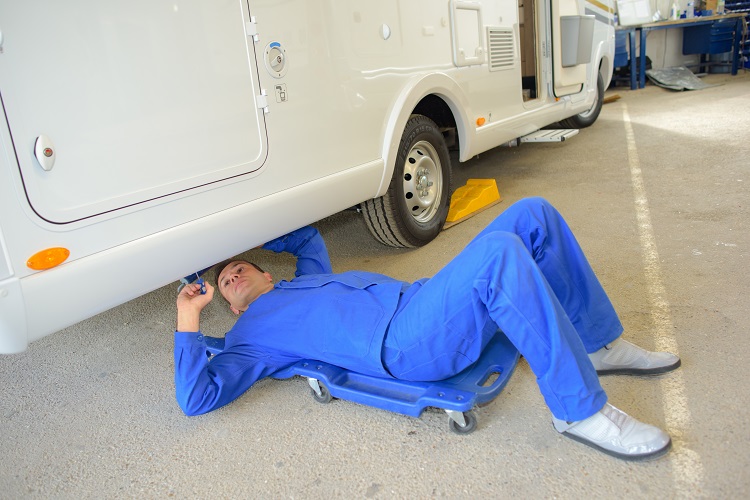
Your first line of defense in RV maintenance is conducting a thorough inspection. Here, you are looking for problems. The sooner you catch them, the less damage they’ll be able to do and the lower your service bill will be. Read on for tips on inspecting your RV.
Check the Exterior
Start by checking the outside of your RV. Are there any cracking seams? Is the sealant wearing away? Are there any gaps or holes in the corners and sidewalls? Make sure the integrity of your rig is standing strong.
If it’s been a while since you washed your RV, you might want to get that done now. Leaving grime build-up on the outside can lead to damage over time.
Check the Interior
Before moving onto the inside, you can air out your RV. Open up all the doors, windows, cabinets, slide-outs, and awning to help keep things fresh.
As you open doors and windows, listen for any creaking hinges. Look throughout the various nooks and crannies in your RV to see if any critters have made themselves a home inside. See if you can spot evidence of water damage. Test your appliances and lights to ensure they are all functioning well.
Check Your Tires
There are two key measurements to ensuring your tires are running well and are able to keep you safe on the road.
First, check your tire pressure to ensure they aren’t underinflated or overinflated. All you need is a tire pressure gauge. Then, check the reading against the manufacturer’s recommendations. Try to do your measurement when the tires are cold for the most accurate reading.
Second, measure the tread. Tread gets worn down naturally over time, but eventually it gets bare enough that tires can’t maintain proper traction with the road. Your owner’s manual will let you know what level of worn-down tread merits a replacement. If you notice that the tread is wearing down unevenly or at an odd rate, this could suggest a mechanical issue that is worth taking a trip to a service department.
For more information or to explore RVs for sale, visit Chesaco RV. We are located across Maryland, Pennsylvania, and Florida.
